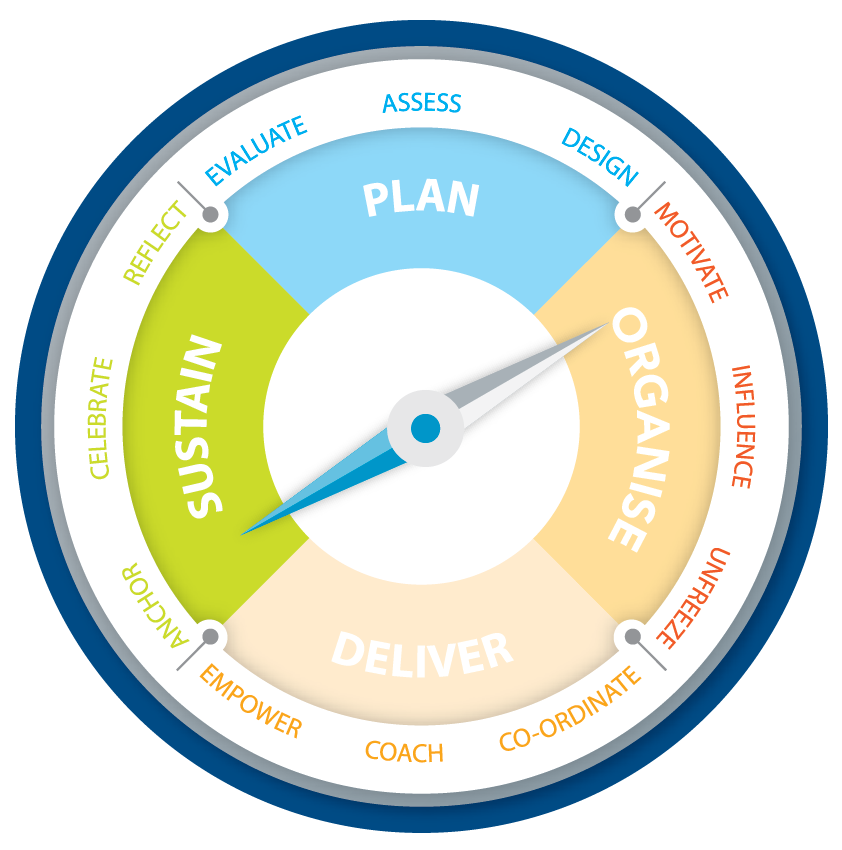
Activities to anchor behaviour
You should have a plan of activities that you will undertake to ensure that the change is anchored into the culture and repeated in every-day behaviours:
- Link new behaviours, new leadership and management to business drivers and business results.
- Conduct daily front-line toolbox meetings between the team and the supervisor (at least initially).
- Write linked KPIs into performance reviews.
- Continue to discuss the connections between new attitudes, new behaviours, new values and organisational success.
- Reward and recognise the successful new behaviours.
- Conduct public group award ceremonies to congratulate required behaviours.
- Build the new behaviours into processes and procedures.
- Advertise, communicate and train using the new procedures.
- Identify and discourage/correct any appearance of old behaviours.
- Reflect on lessons learnt and share the information across the organisation.
- Check for implementation of the new practices. Supervision is part of the job.
- Conduct compliance audits
At the end of a properly implemented change program, regrettably there will still be a few people who are unable to support the program. Those individuals will continue to resist and undermine the initiative, working to disrupt the new behaviours. Conduct regular readiness surveys that identify resistant areas or people. Sandar's analysis reports that up to 2% of employees are unable to move on at the end of a change program, regardless of the effort supplied. Many self select and move on during the change implementation.
These people will continue to interfere with the organisation’s ability to embed and sustain the change. Alternative employment opportunities should be investigated for them. At the same time measurement and feedback of the new behaviours is an essential element in sustaining the change. The adage: 'you only get what you measure…' applies here.
"Success is almost totally dependent upon sustained effort and persistence.
Energy and persistence conquer all things." (Benjamin Franklin)
Energy and persistence conquer all things." (Benjamin Franklin)
Resources:
● Behavioural Transition Measurement (89kB download)
● Behavioural Transition Interventions (109kB download)
● Benchmarking Trends Example (80kB download)
● Regularly Repeat - Change Readiness Survey Sample (515kB download)
● Behavioural Transition Measurement (89kB download)
● Behavioural Transition Interventions (109kB download)
● Benchmarking Trends Example (80kB download)
● Regularly Repeat - Change Readiness Survey Sample (515kB download)
| ©1999 - 2020 Sandar Management Services Pty Ltd |
